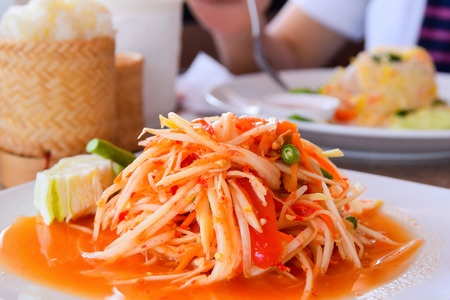This is Part 8 of my 12-Part Series on Leaky Gut and Family Health. Part 1: Leaky Gut: What Is it, And Do You and Your Child Have It? Part 2: Leaky Gut According to Chinese Medicine Part 3: The 4 R’s to Gut Healing: Removal (Step 1) Part 4: The Feingold Diet for Behavioral Problems Part 5: Real Food 101 Part 6: Autoimmune Paleo Protocol for Leaky Gut Part 7: The 4 R’s to Gut Healing: Replacement (Step 2) Part 9: Repair Phase for Healing Leaky Gut Part 10: Challenges of Going Through Dietary Changes and How To Succeed Part 11: Raising Kids with Healthy Cravings and Part 12: Leaky Gut: Tying It All Together
We are finally to the 8th article in this leaky gut series–we have learned a lot! If you have not read the previous articles in the series, please go back and read each one in order. There is a specific process involved in healing leaky gut syndrome (and understanding the symptoms), which is not to be taken lightly. What I will be discussing in this article is reinoculation — otherwise known as probiotic therapy — which can produce serious side effects in some individuals with severe gut dysbiosis. This is one reason why this step should be avoided until all other gut healing steps have been implemented.
You may begin reinoculation after 1) you have identified pro-inflammatory foods and foods that cause an immune reaction and removed them from your diet for 30 days, and 2) you have replaced deficient nutrients and digestive enzymes. The premise is that if you suffer from type 1 or type 2 diabetes, obesity, depression, attention deficit disorder, autism, ulcerative colitis, Crohn’s disease, autoimmune disease, or chronic fatigue, you likely have gut dysbiosis — an imbalance in the types of bacteria living in your gut. You likely have low numbers of beneficial bacteria and high numbers of less desirable species of bacteria.
Immediately taking probiotic supplements and eating fermented foods while you continue to eat breads, genetically modified foods, processed foods, and the like can bring about unpleasant side effects ranging from bloating and gas to extreme fatigue and brain fog. This happens because those “pro” biotics can feed pathogenic bacteria that are already overly abundant in your gut. An elimination diet must come first. Four weeks or about 30 days on an elimination diet is usually a good amount of time to allow a large number of those pathogenic bacteria to slowly die off. At that point you may begin with small amounts of fermented foods such as kimchee, sauerkraut, kefir, kombucha, kvass, and miso, as well as a probiotic supplement containing a wide variety of beneficial strains.
I recommend introducing one new fermented food every three or four days. For instance, on day one you might try one tablespoon of kimchee. On day two, have two tablespoons of kimchee. On day three, have four tablespoons of kimchee. Assess for any side effects such as painful gas, bloating, brain fog, or fatigue. Skip a day or decrease the amount of the fermented food until symptoms subside. Then on day four or five, try four ounces of kombucha. The next day, try eight ounces and the next day, sixteen ounces. Keep trying new fermented foods one at a time, steadily increasing the dosage, and monitoring for any side effects. If you are on the right track, you should start to feel better as you add more fermented foods and are able to tolerate them. Many individuals not only report having a boost in energy and mood, but also having incredible-looking skin and bulletproof digestion. Here’s a simple recipe for homemade kimchee to get you started.
Homemade Kimchi
Makes 1 quart
Ingredients:
- 1 head napa cabbage (about 2 pounds cabbage)
- 1/4 cup sea salt or kosher salt
- filtered or spring water
- 1 tsp coconut sugar
- 5 – 6 cloves garlic, minced
- 1 inch slice of fresh ginger, minced
- 2 tablespoons Red Boat fish sauce
- 5 tbsp red pepper flakes
- 1 daikon radish, peeled and cut into matchstick slices
- 4 scallions, chopped
Equipment:
- Cutting board and knife
- Large bowl and small bowl
- Gloves (optional, but highly recommended)
- Colander
- Clean 1-quart jar with canning lid or plastic lid
- Plate and heavy object
Instructions:
- Chop the cabbage into 2-inch strips.
- Add salt to the cabbage and massage it into the cabbage until it starts to soften. Adda little bit of water to cover the cabbage. Put a plate on top of the cabbage and something heavy onto the plate. Leave it alone for a couple of hours.
- Rinse the cabbage under cold water 3 times and drain in a colander for 15-20 minutes. Rinse and dry the bowl you used for salting, and set it aside.
- Combine the garlic, ginger, coconut sugar, and fish sauce in a small bowl and mix to form a smooth paste. Mix in the red pepper flakes, daikon radish, and scallions.
- Gently squeeze any remaining water from the cabbage and return it to the bowl along with the mixture you made in the small bowl.
- Mix the paste into the vegetables until they are thoroughly coated. You will probably want to use gloves so you can do this with your hands without stains and stings.
- Pack the kimchi into the jar, pressing down on it until the brine rises to cover the vegetables. Leave at least 1-inch of headspace. Seal the jar with a lid.
- Let the kimchee ferment at room temperature for 1-5 days. The longer it ferments, the more flavorful it will be!
- Check the kimchi once a day, pressing down on the vegetables with a clean finger or spoon to keep them submerged under the brine. Transfer to the refrigerator after 1 – 5 days of fermentation. Kimchee usually tastes best after at least 7 days in the refrigerator.
Now to Part 9!

